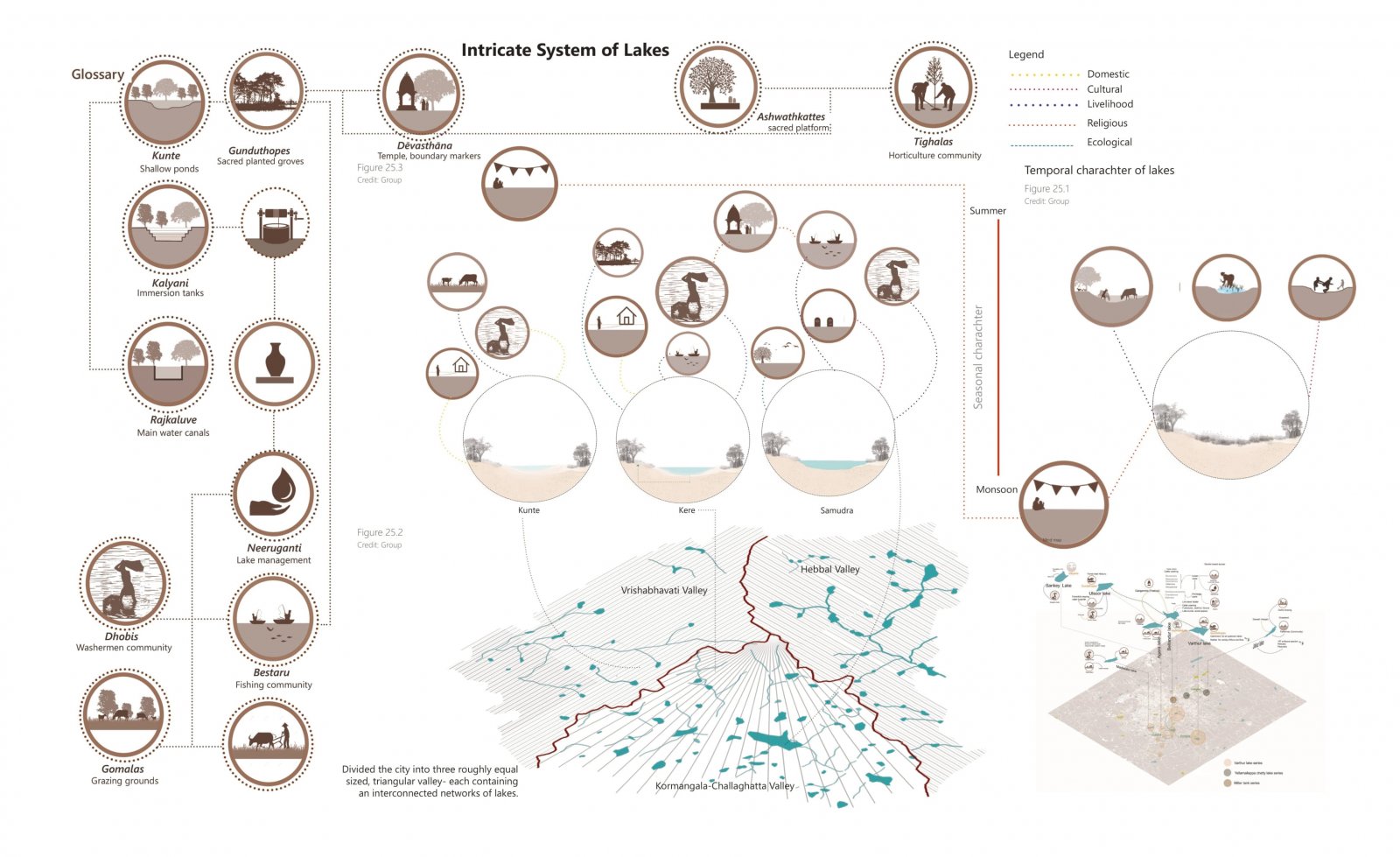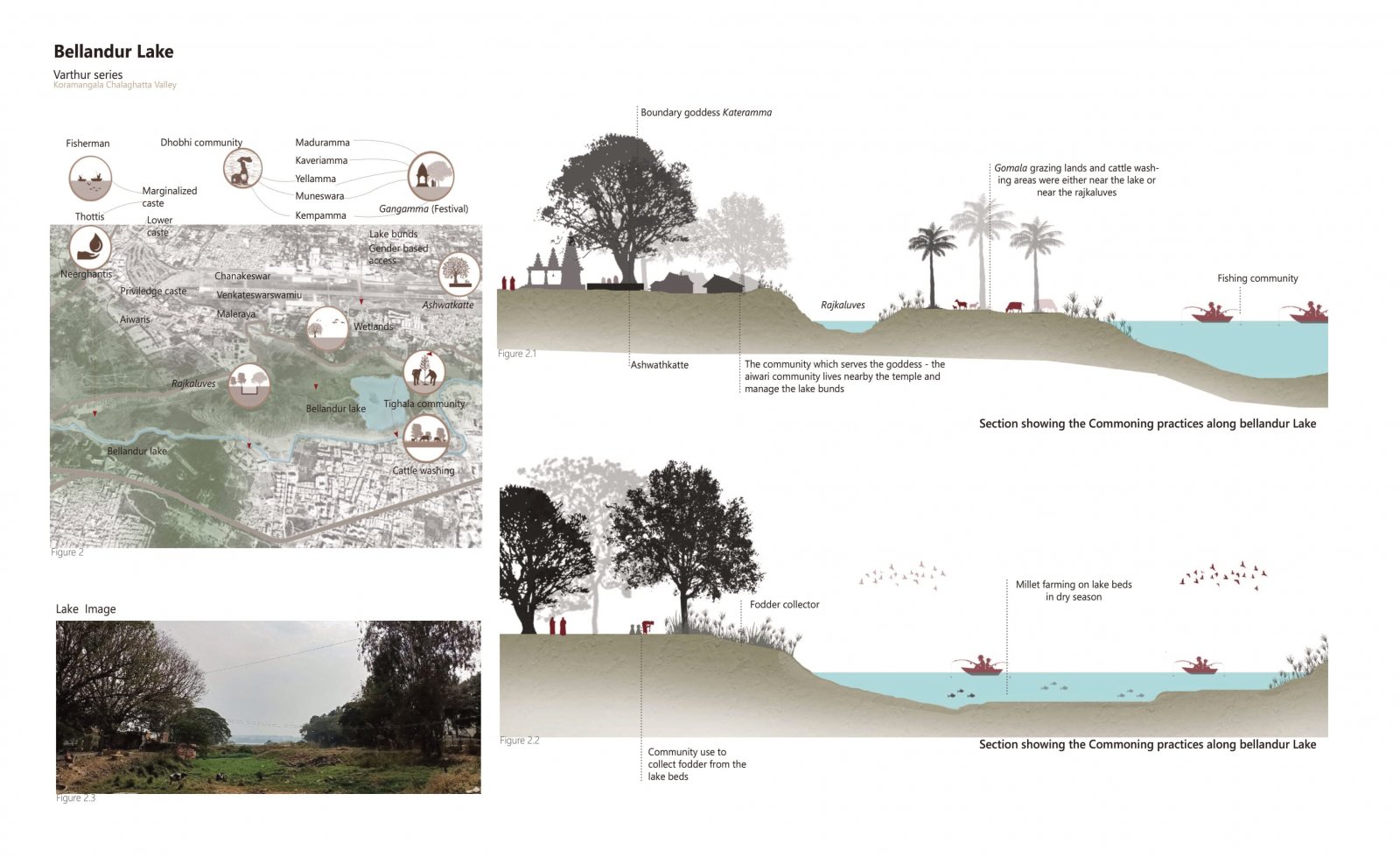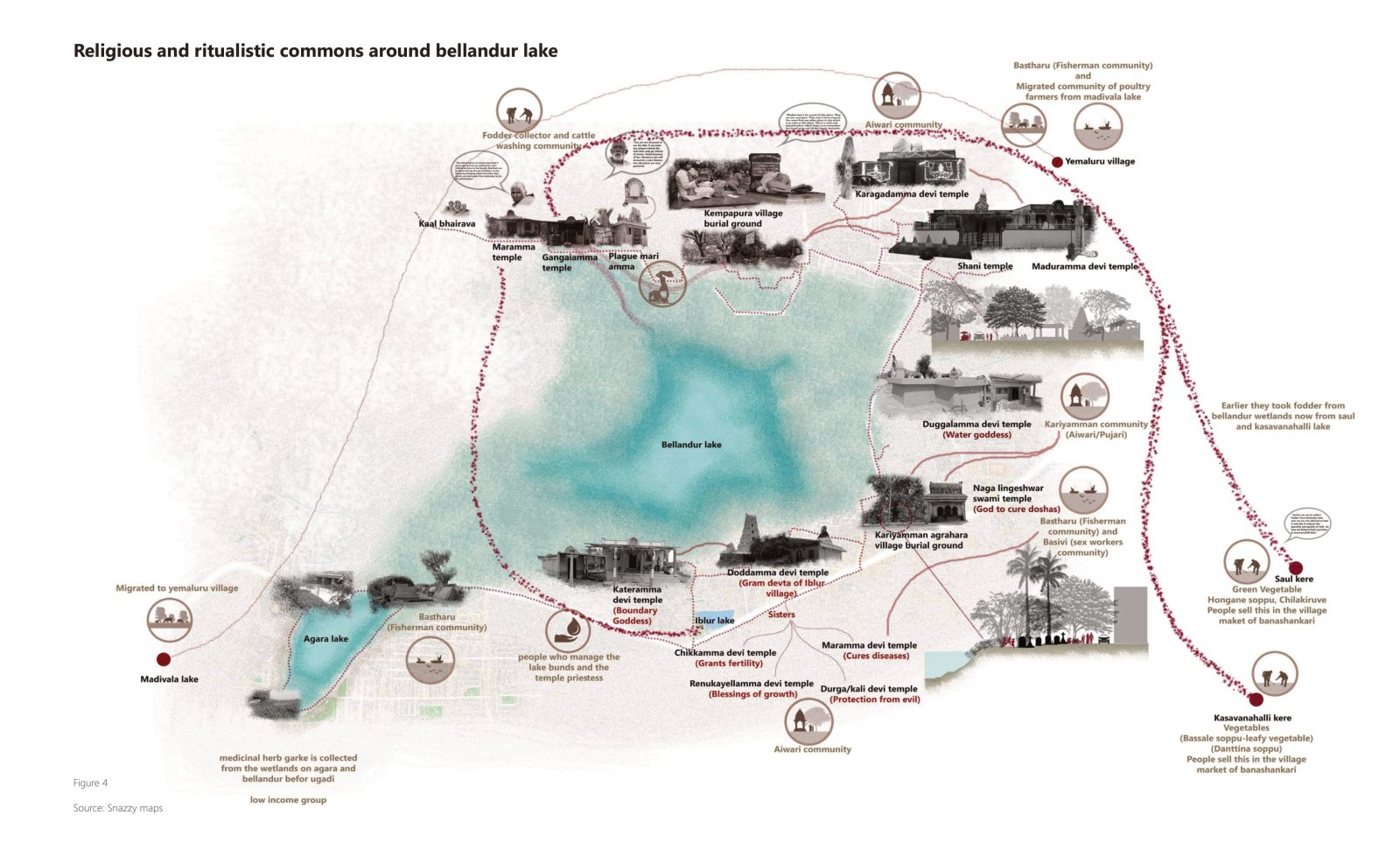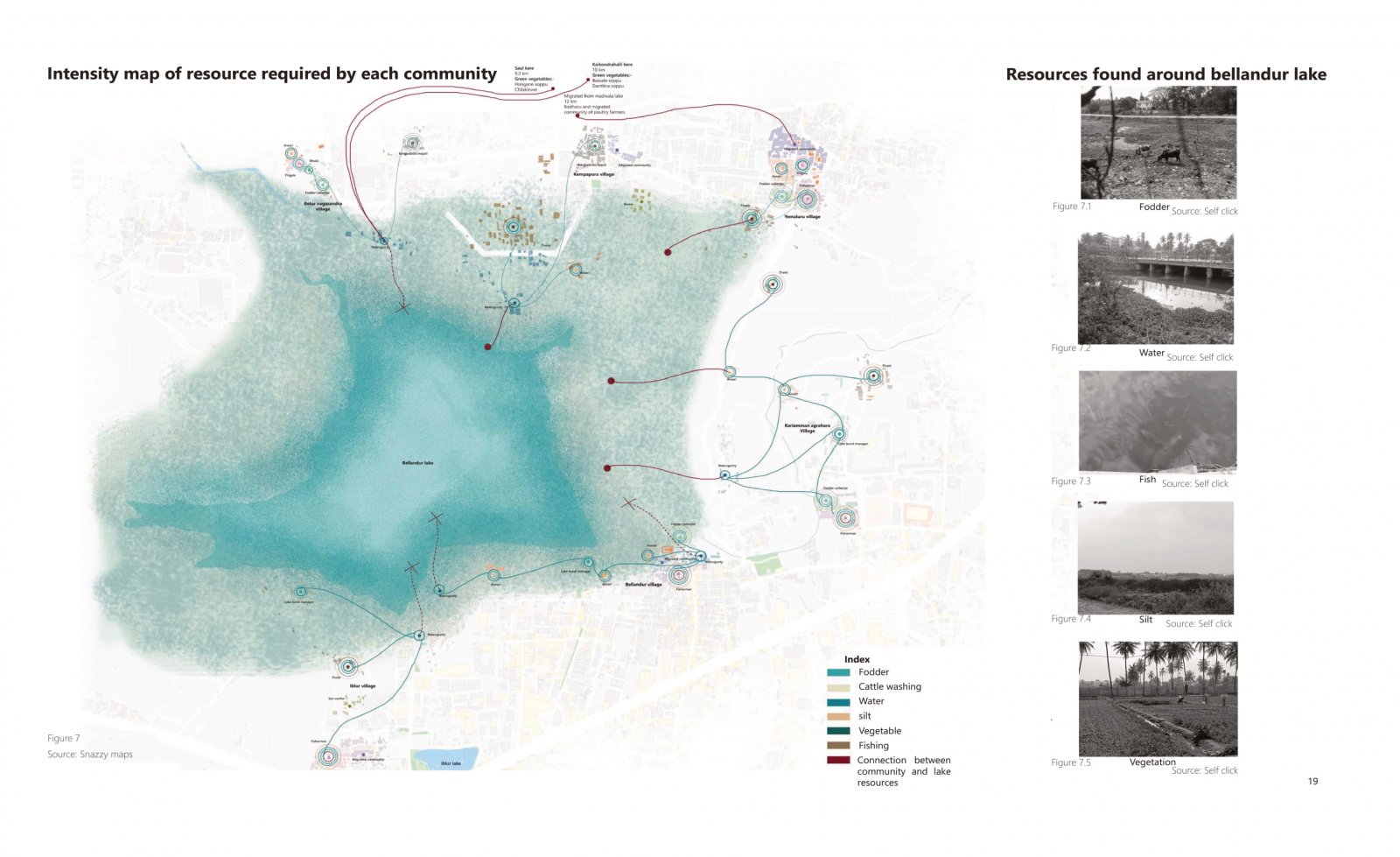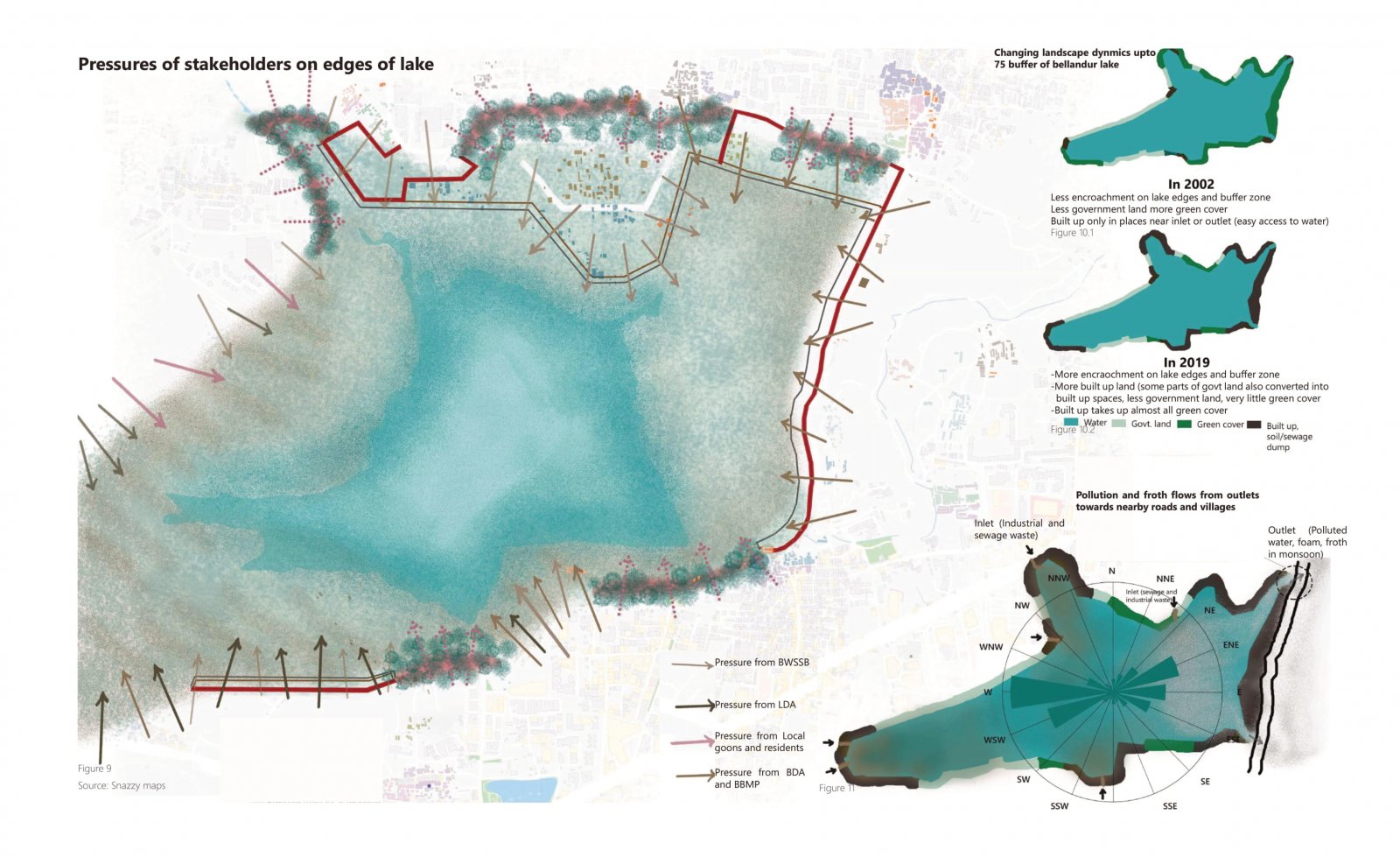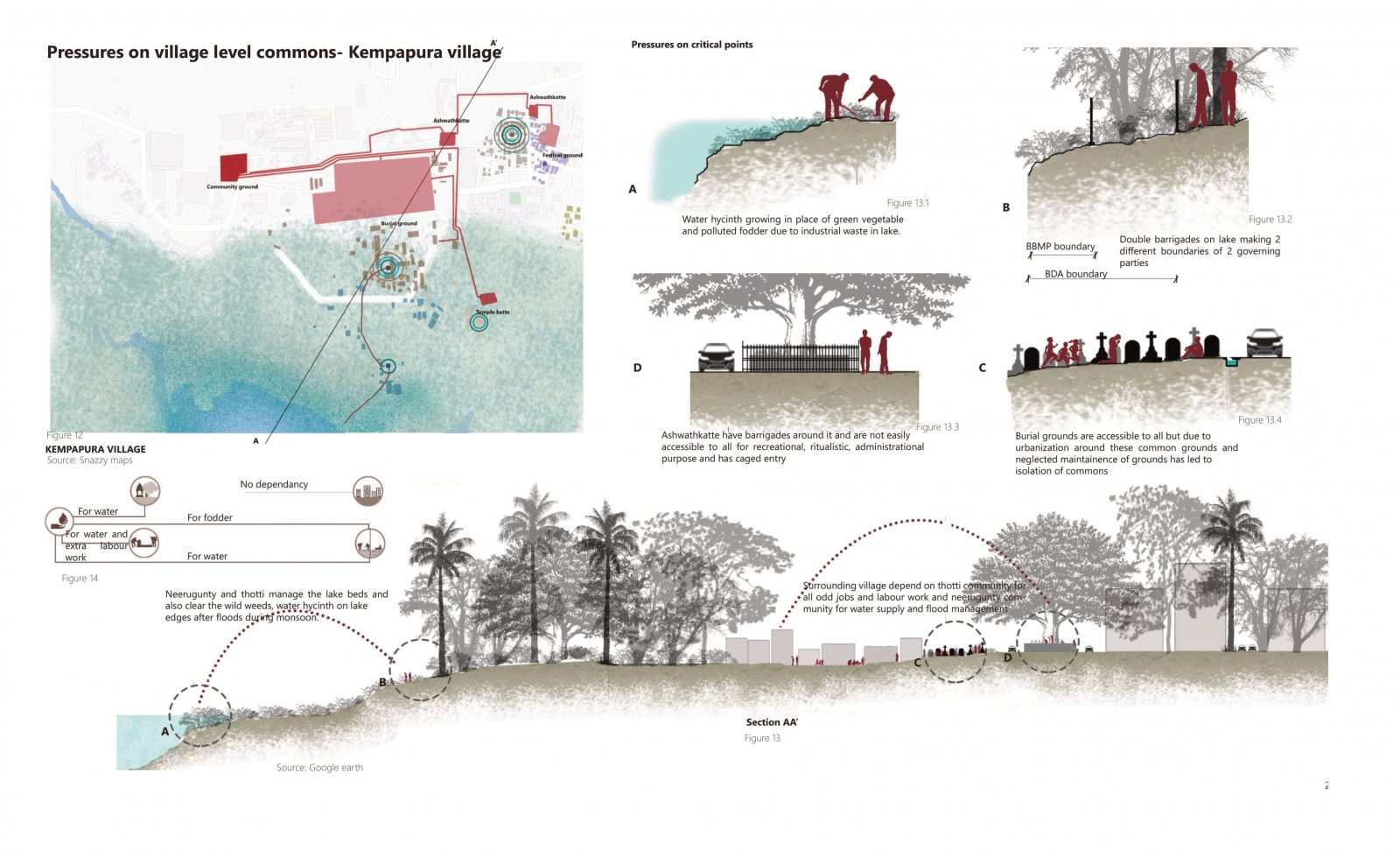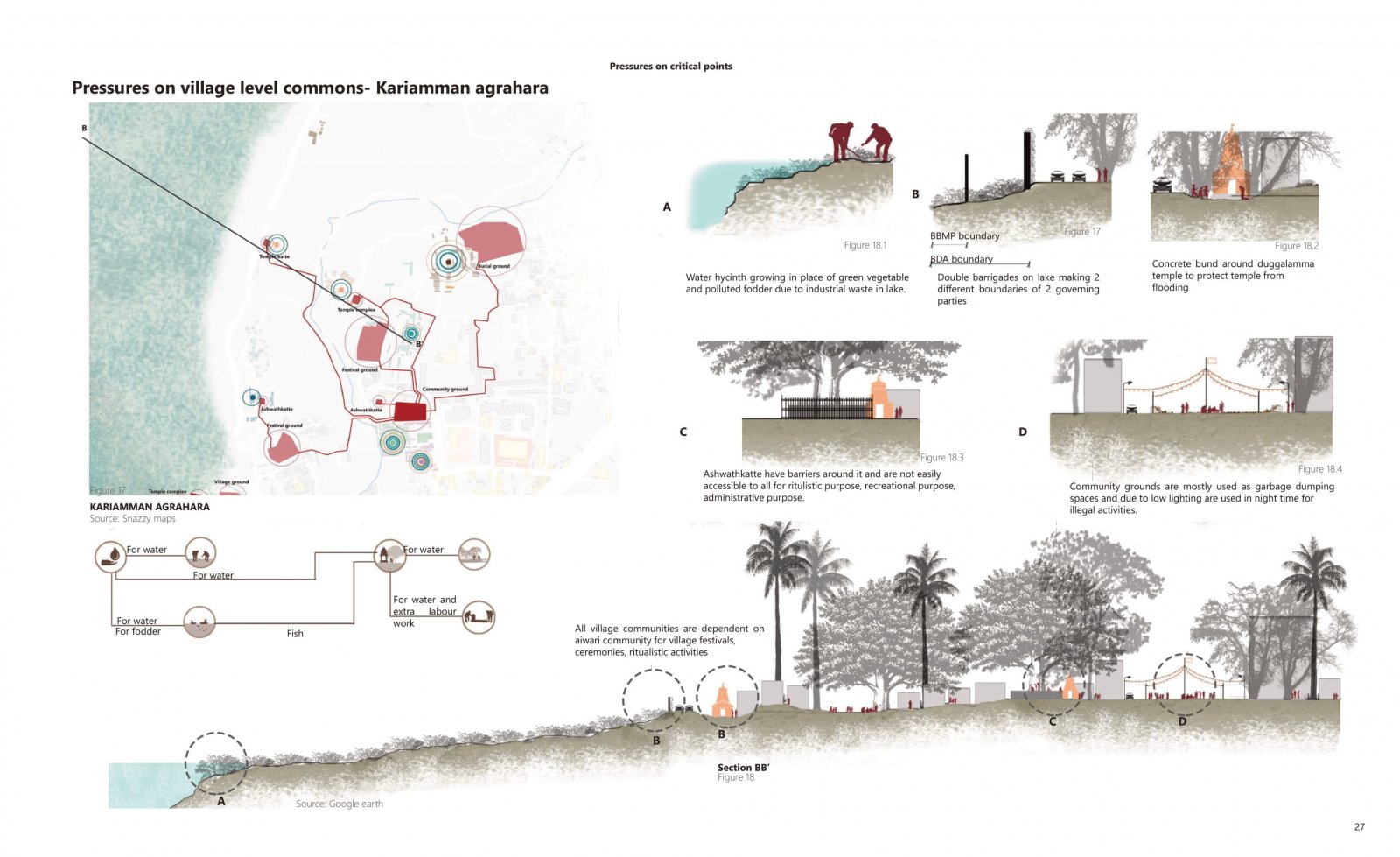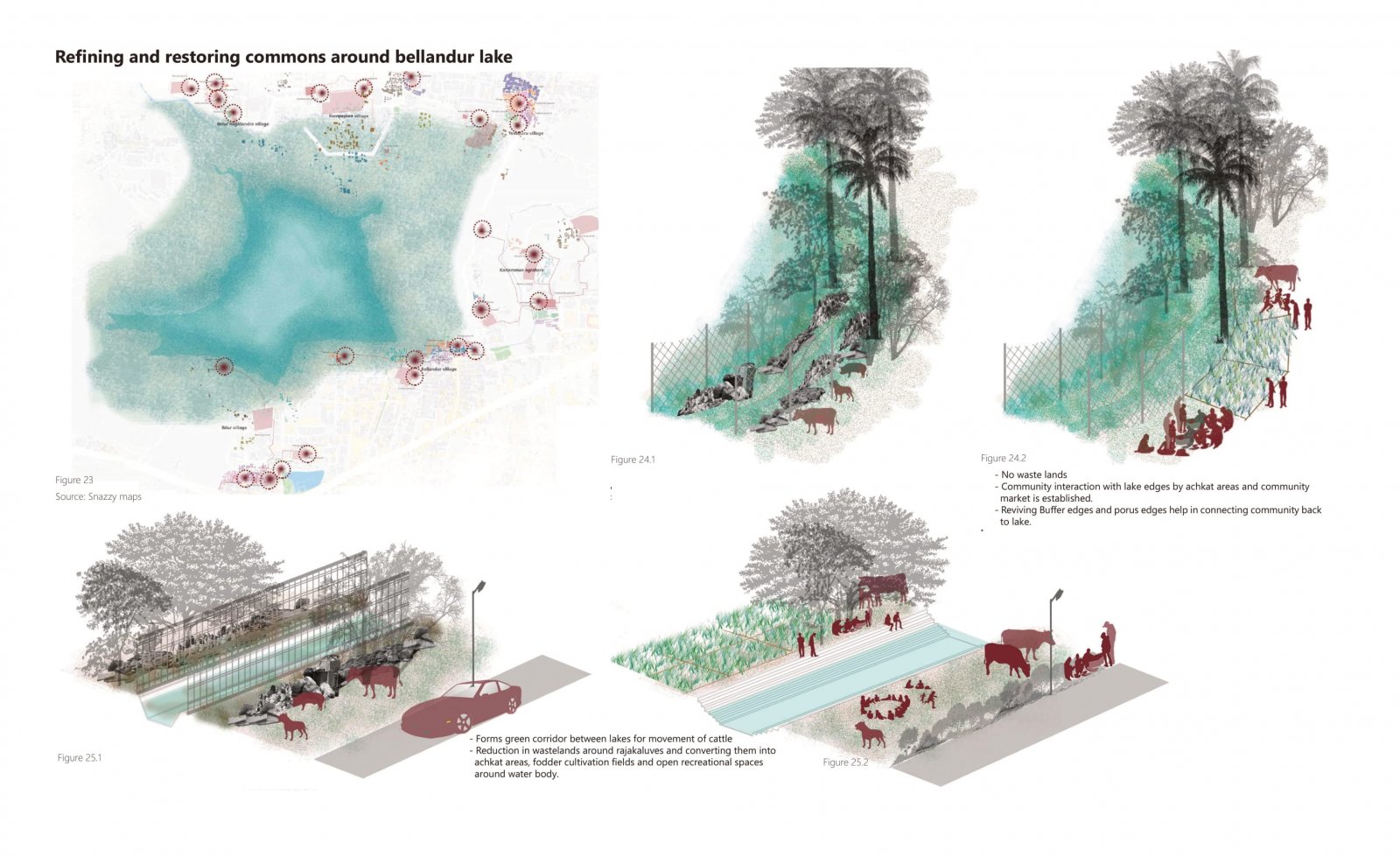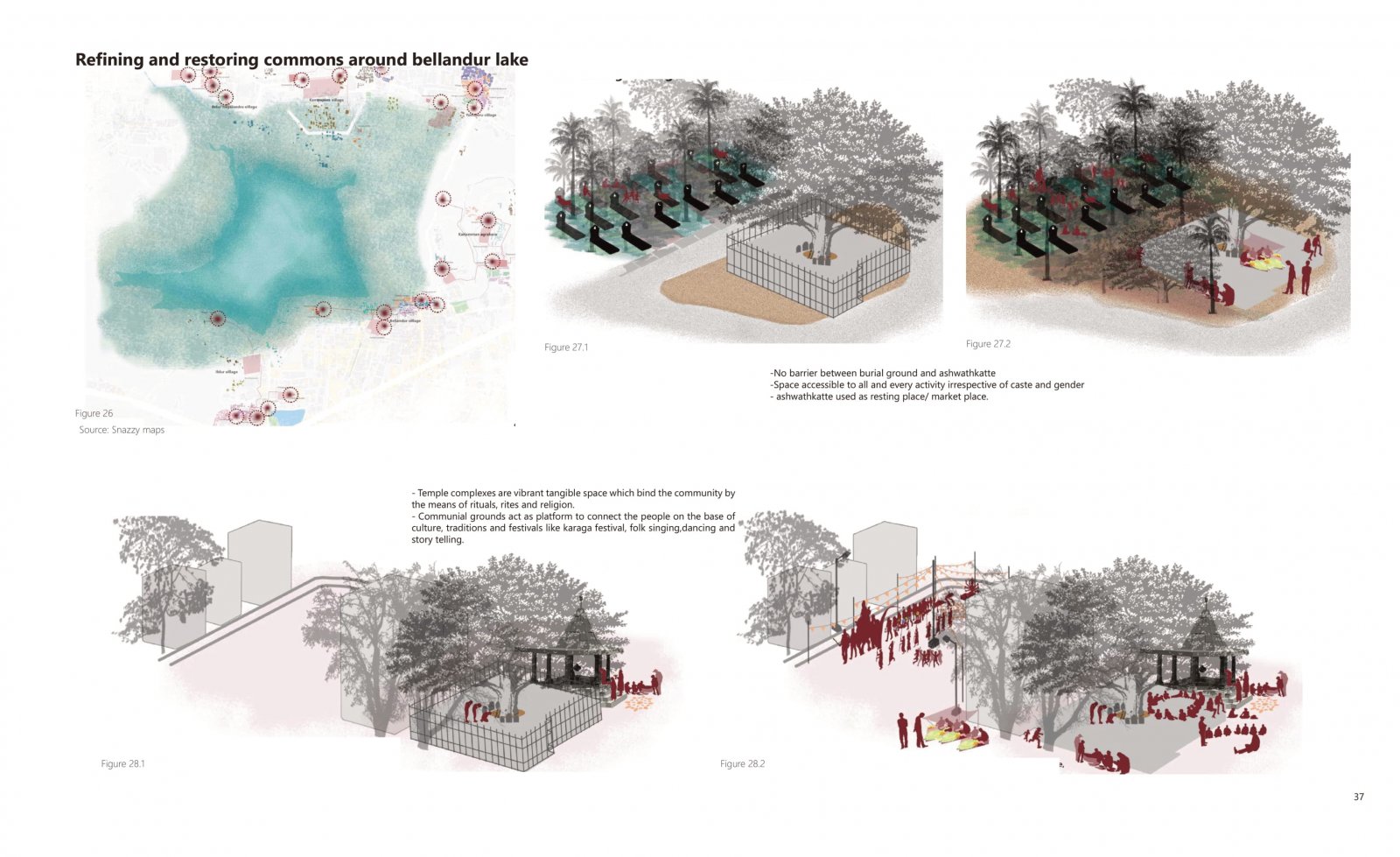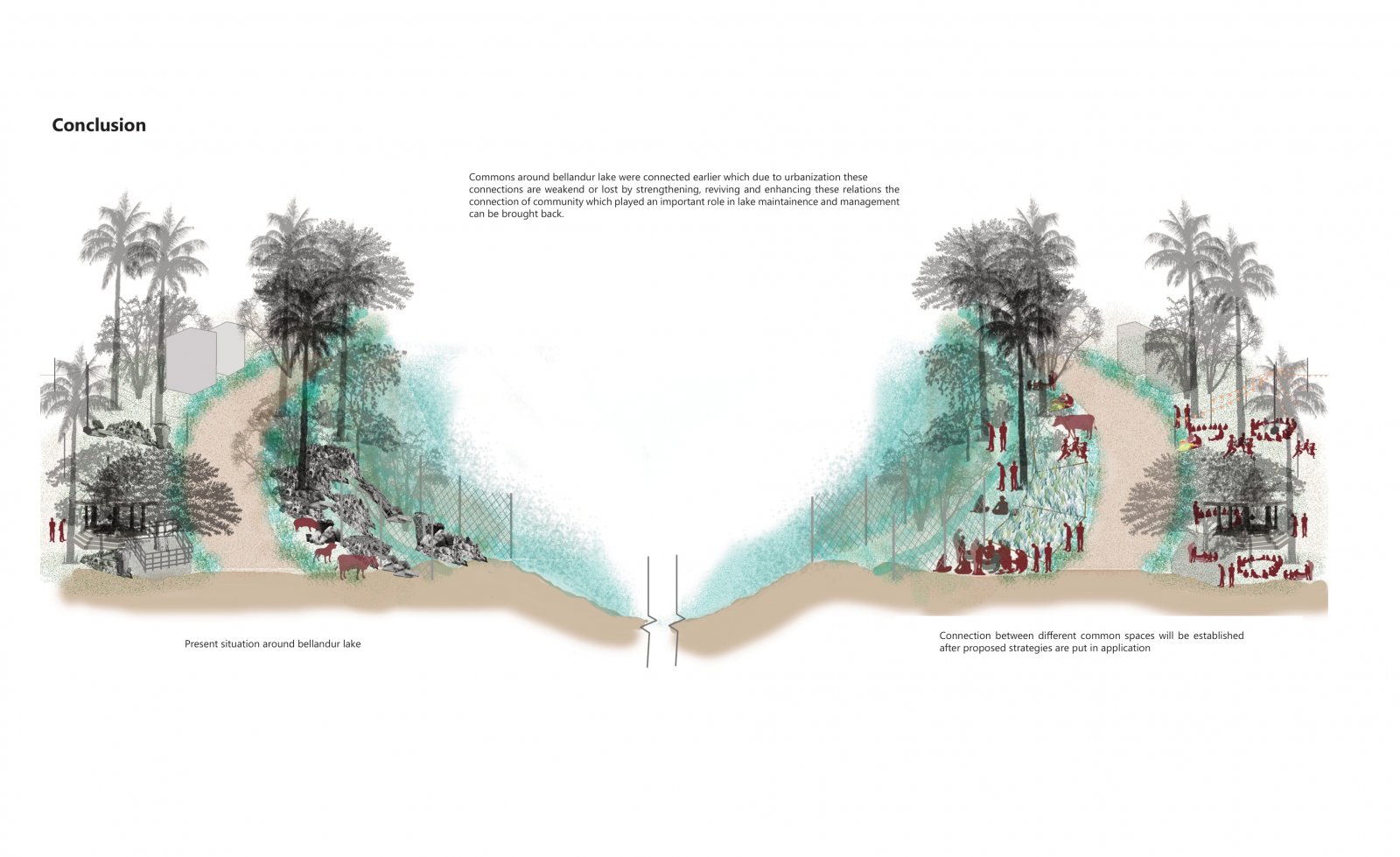Your browser is out-of-date!
For a richer surfing experience on our website, please update your browser. Update my browser now!
For a richer surfing experience on our website, please update your browser. Update my browser now!
Bellandur lake has a rich, cultural and religious diversity around it with many temples and ritualistic places on the lake edge. Various communities living on the edges of bellandur lake are connected to the lake because of these rituals, culture, and occupational activities. Due to this, there are many religiously and ecologically bound common spaces on the lake edge. These commons due to urbanization, political pressures, and depletion of the ecological layer have lost their essence and their linkages to the different communities. In order to revive the commons, the connection between community and the lake needs to be restored.
View Additional Work